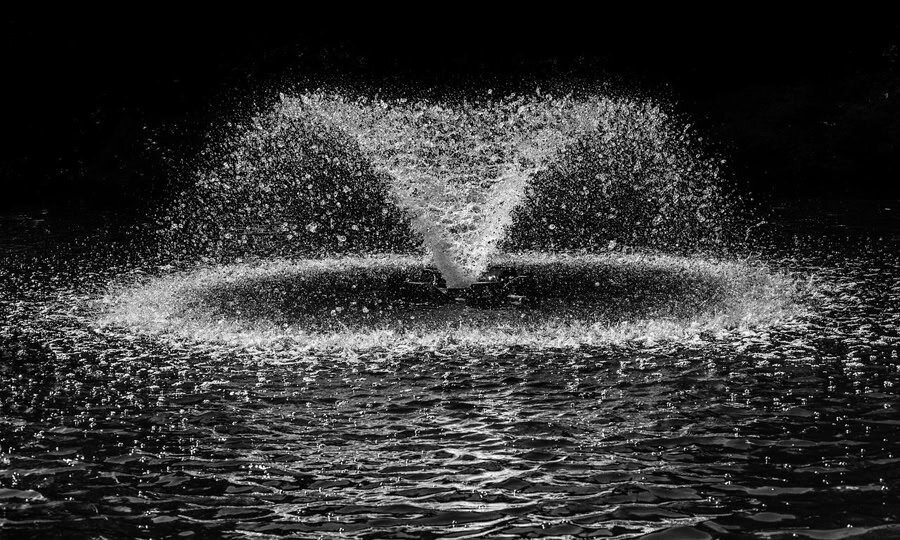When we decorate our homes, we choose the finest furniture and other items to enhance the space. A fountain in a pond or any water body can brighten the exterior space and make it look appealing. Similarly, a fountain can enhance the space outside and make it look like a million bucks!
Do you also want to get a fountain? That’s just the start, dear friend! A fountain pump submersible will be needed to ensure the fountain works efficiently. Some people get the wrong pump, which could cause a lot of trouble. You want a gentle yet visually appealing jet of water, not a wild stream. In this quick post, we will tell you how to choose a fountain pump. It’s not rocket science. Once you read this post carefully, you wouldn’t need any other assistance. Dive right into the post (not the pond!).
Why Get a Fountain, anyway?
Floating fountains and stationary fountains are trending these days. You will find that a lot of people like to enhance their space using floating fountains, concrete or resin fountains, or pot fountains. It could be your backyard or your pond – a dull space looks lifeless. You can beautify it using a fountain.
But maintaining it and ensuring the fountain works efficiently requires a little know how. For this, you have to invest in a good fountain pump.
Understanding Gallons Per Hour
It’s a term used for the rate at which your pump moves the water. Don’t miss out on this number because it’s important.
When you buy a fountain pump, this number will appear during your shopping spree. It will help you determine how much water will come from your fountain.
But do not confuse pump output gallons per hour with fountain output gallons per hour. Pump gallons per hour output is merely the measure of how much water can flow through your pump without restrictions. Tubing and pipe both restrict (it’s best to use bigger sizes for more flow), and fountain nozzles restrict flow, too. Some 15,000 gallon per hour pumps only produce a net flow rate of 1,500-2,000 gallons per hour once the water flow is restricted by a nozzle. For the most flow rate of a pond fountain by brand, we recommend a Kasco fountain. These fountains are independently tested with high flow rates out of their nozzles.
The Maximum Lift
When it comes to floating pond fountains, the vertical and horizontal dimensions of the fountain display are determined by the pump used and the kind of nozzle design. Typically, manufacturers include width and height dimensions of each pump and nozzle combination on their websites.
But when it comes to concrete, stone, or resin fountains, you need to keep the maximum lift, also known as “head” and the rate of flow the pump produces at different heights, also known as “flow rate” or the “flow curve.” The flow rate of a pump is reduced the higher the water is lifted.
Most concrete and resin fountain manufacturers will tell you what size pump you need for your fountain, or you can examine the pump label of whatever pump the fountain comes with. Some fountains come here from Mexico or China, however, and no pump is included. In those cases it is best to try to gauge what size pump you will need.
First, figure out how much space you have to install your pump. Some fountains come with small inserts for pump installation and it’s important your pump will fit into these small spaces.
Then measure the fountain from where the pump will sit to the top of the fountain. If the top of your fountain is two feet above where the pump resides, you need to examine how much flow your pump will produce at two feet of rise. Pump boxes typically show a pump curve for each pump. For example, our FT-650 has these specifications:
| Item# | Watts | Max.Head | GPH | 20 | 40 | 60 | 80 | 100 | 120 | 140 |
| FT-650-Outdoor | 70 | 140 | 780 | 680 | 620 | 580 | 460 | 300 | 150 | 0 |
It consumes 70 watts of electricity, will pump up to 140” high. At 0”, it is pumping 780 gallons per hour. At 40” that flow has declined to 620 gallons per hour. At 120 inches, the flow has decreased to a mere 150 gph.
And these flow rates are only true if you use 1” tubing or piping. If you reduce to ½”, the flow rate will decline considerably.
Important Things To Consider When Choosing a Fountain Pump
As mentioned above, you must focus on pump dimensions and the discharge size.
You must ensure that the pump fits wherever you place it. Next, there is the discharge size. You want to ensure that the pump’s discharge size is accurate and fits with the tubing or piping you will use for the fountain plumbing. Many larger pumps can be connected either with vinyl tubing or you can insert a PVC adapter into the pump.
Summing up
Fountain pumps are essential for the smooth functioning of the fountain. You need to select one that fits correctly and accurately fits the flow rate at maximum height or your fountain. If you keep these things in mind, it will be easier to purchase a fountain pump.
While purchasing a pump, feel free to buy some fountain lights too. It will help enhance the outdoor space, and your house could be the ultimate party spot for all.


